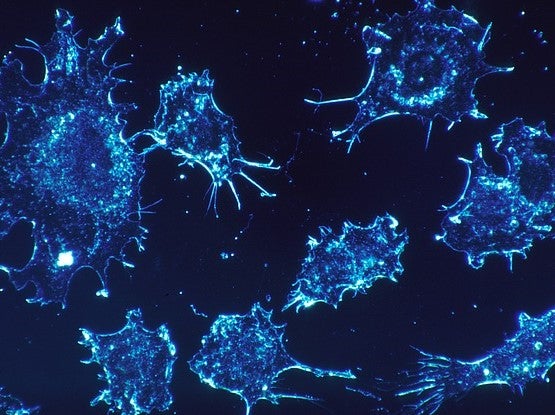
University of Salford researchers have uncovered ways that energetic cancer stem cells (e-CSCs) are responsible for cell growth, and consequently have identified new therapeutic targets.
The team isolated e-CSCs from human breast tumours using anti-fluorescent techniques and found they had special characteristics, including higher mitochondrial mass, elevated oxidative metabolism and an increased capacity to create a tumour, known as ‘stemness’.
This suggests the e-CSCs may use anti-oxidants and mitochondrial energy to reverse the cell cycle and prevent themselves dying as normal cells should.
One phenotype of e-CSCS that produced 3D spheroids was discovered to be completely dependent on oxidative mitochondrial metabolism for continued survival and growth, meaning mitochondrial inhibitors could be a potential new drug target to eliminate e-CSCs.
Lead researcher Professor Michael P Lisanti said: “If, as we believe, we have found the beginning of the road, we may have to press the reset button on how we treat cancer with drugs.”
CSCs are tumour-initiating cells, which are resistant to chemotherapy and radiotherapy, making them responsible for tumour recurrence and metastasis of cancer in humans and providing a need for the development of new therapies that target them. Lisanti said: “Most cancer patients die because of the spread of tumour cells to distant sites, known as metastasis.”
How well do you really know your competitors?
Access the most comprehensive Company Profiles on the market, powered by GlobalData. Save hours of research. Gain competitive edge.

Thank you!
Your download email will arrive shortly
Not ready to buy yet? Download a free sample
We are confident about the unique quality of our Company Profiles. However, we want you to make the most beneficial decision for your business, so we offer a free sample that you can download by submitting the below form
By GlobalDataHe continued: “The evidence is increasingly that metastatic cancer stem cells, fuelled by mitochondria, are responsible. Yet, most chemotherapy targets the bulk cancer cells. Some chemotherapy even makes cancer stem cells proliferate more.”
The study also found that the e-CSCs displayed characteristics of senescence, or cell death; one senescence biomarker was 17 times more prevalent in CSCs.
Researcher Professor Federica Sotgia explained: “If we ask where do these cells come from, the evidence indicates they emerge from senescent (dying) cells.”
“They displayed hallmarks of senescence but are no longer senescent, they have broken out of senescence.”





